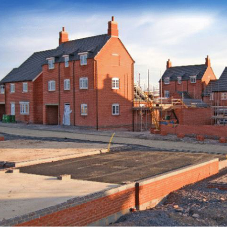Written by Chris Ashworth
When considering the specification process, I’d like to start by looking at why products are selected and specified. The main driver should be that they are the best for the job. That might be because they have a long life, offer good quality or are the lowest cost. Very often architects and engineers select what they have used before as it is a known quantity which they have confidence in. New products will often be investigated if the specifier was not happy with what they used before or they need to solve a new design challenge. Often that new design challenge will be a change in legislation. Influences on product selection include ease of access to design information, the help provided by the manufacturer with design and recommendations by colleagues or contractors.
Product specification and selection can happen at a number of points during the design and construction of a project. When it occurs depends on the type of product and the form of specification used. At the very early stages, during the Project Brief (RIBA Plan of Work Stage 1) some products are selected. For example, external products such as bricks, roof tiles and facades often have to be presented as part of the planning application process. It is more likely that product specifications will be finalised during Stage 2 to 4 when Concept, Developed Design and Technical Design take place. At this point the architect is taking the requirements of the client and combining them with specialist consultant recommendations and legislation while still trying to arrive at a design which meets the aspirations of Firmness (Fit for purpose, meets Codes of Compliance, provides value, Sustainable), Commodity (Service Life, Warranty, Constructability, Compatibility) and Beauty (Appearance, other Aesthetic concerns).
Having decided on his design, the architect then has to select the form of specification to use, he has 4 formats to select from, and often opts for a combination of these.
Performance specifications mean that the required results are specified with the criteria against which the performance will be verified. The contractor is free to provide any material complying with the performance criteria. This might be used for a fire door where the fire resistance is stated and the contractor selects a product which meets that requirement.
Advantages for the specifier are that the contractor has flexibility in developing a solution which can include new technologies and innovation. It also allows specification of a complete system. However great care is required in describing design intent to provide a complete and understandable specification, which in the world of ‘cut and paste’ might not happen. A specifier will often use this form if it is a large project and he wants to encourage competition, it is also widely used for Design & Build projects. Finally, it transfers responsibility to the Contractor which could be viewed as an advantage or a disadvantage.
Descriptive is similar to Performance, but describes the exact properties of materials and methods of installation in detail without using proprietary names. To continue with our example of a door, the description would include the type of material it was constructed from, finish for architectural ironmongery and if it was fire resisting the material used for the core. This approach has similar advantages and disadvantages to a Performance specification.
Reference Standards are usually incorporated into one of the other forms of specification. As the name suggests it quotes established Standards to which the products shall comply or conform.
Advantages for the specifier are that these standards will be widely known and accepted by Owner and Contractor and as with Performance the specification remains open to competition. But the reference must be quoted fully, including all supplementary information. This may not happen, or again thanks to ‘cut and paste’ an obsolete standard may be quoted.
Proprietary states one or a number of brand names, model numbers and other proprietary information, often with the addition of ‘Or Equal’ or ‘Or Equivalent’. This approach means the specifier knows the solution is available and what they will get without the need for a high level of detailing. However, it does reduce the level of competition. Perhaps the biggest shortcoming is the use of ‘Equal/Equivalent’ without defining how the product must be equivalent. This then becomes a matter of interpretation by the contractor.
The choice of specification format is driven by many factors and is not easily explained. But from research we have conducted it is clear that for decorative products more than half of specifications will be Proprietary and for functional products more than half will be Performance/Descriptive.
Manufacturers should aim to have a generic Performance/Descriptive specification which they can provide to specifiers. This should be written in such a way as to favour their product over competitors by incorporating key features. Don’t assume that just because your brand name is listed your product will be used. Develop a Proprietary specification which includes key product features so it is quite clear what an equivalent product must achieve. This is an area of specification sales activity which is often neglected yet it is so important. There is little point devoting significant resource to generating specifications if they are open to switching at installation.
If you’d like to comment about this article, please follow this link to our LinkedIn post
Further Information
Chris is a specialist in specification strategy and founder of Competitive Advantage Consultancy which specialises in market research and training for the construction industry. He is a member of the BIM4M2 steering group and Deputy Chair of the organising committee for CIMCIG, the Chartered Institute of Marketing’s Construction Industry Group.
Sign up to the Barbour Product Search newsletter for the latest product news, case studies and blog articles covering industry trends.
Sign up to the Competitive Advantage newsletter for an overview of construction market activity as well as construction sales and marketing advice.
Please email editor@barbourproductsearch.info if you have any other queries.
Related Blog Articles
















